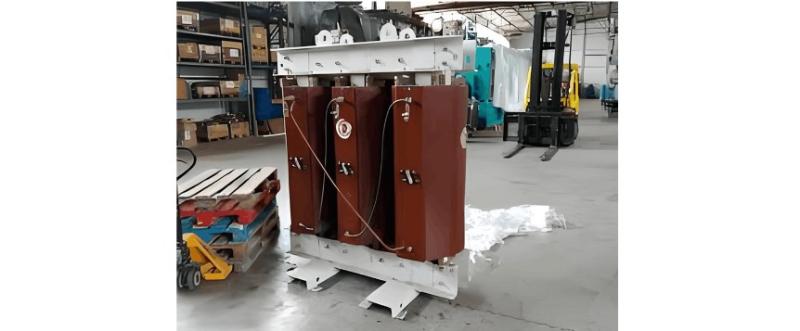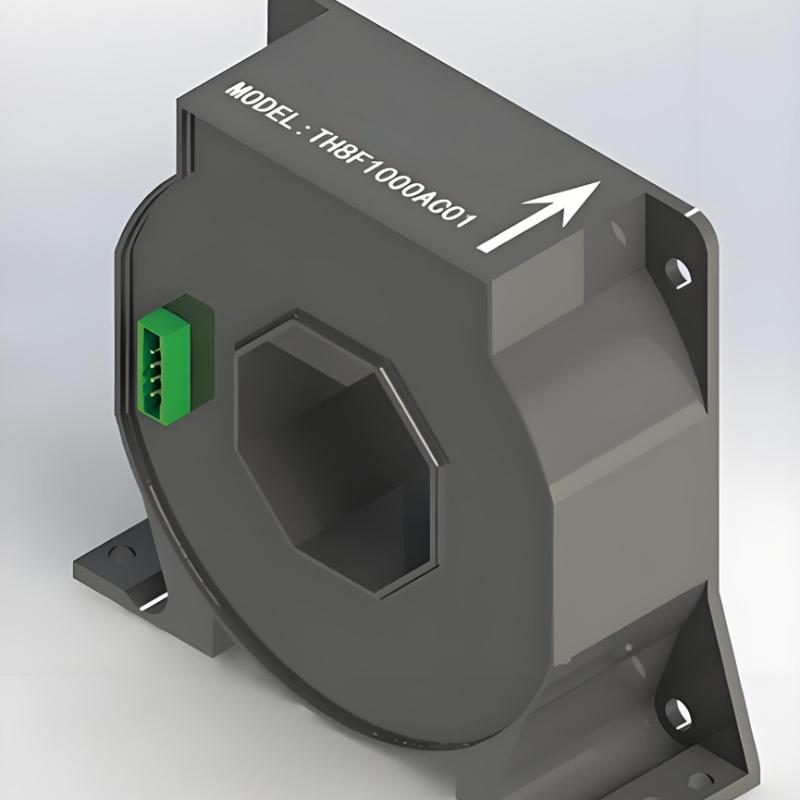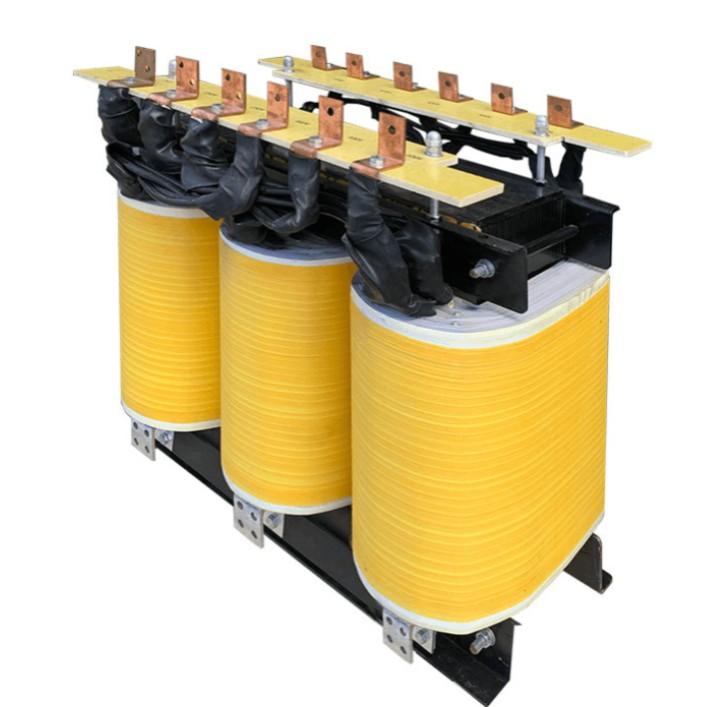Tsanin Karamin Kwamfurta na SST Systems
Yanzu, abincike da SST su ne a tarihin farko. Yana da wahala a kan haɗaƙi da hanyar da ke amfani a cikin mai amfani da ma'aikatar siffofin da kuma al'adun biyu. An yi tasirin rarraba mai yiwuwar da mutane miliyan 4 zuwa 5 RMB. Idan aka yi misali da takaitaccen 2.4 MW SST, a rarrabbin 5 RMB zuwa watts, zai iya shafi tsarin daɗi 8 zuwa 10 miliyan RMB. Wannan bayanin ya faruwa daga masana'antar juna a cikin data centers a Amurka da Turai (kamar Eaton, Delta, Vertiv, da sauransu), wanda ke nuna yanayin halayyarsa a tarihin R&D da kuma girmama ta hanyar da ke amfani.
Karamin Abubuwan Da Ake Iya Koyar Da Su a Cikin Tsarin SST
Idan an yi tasirin rarraba miliyan 5 RMB zuwa watts, za a iya koyar da tsarin daɗi sabuwa uku da karamin:
Modulu na Rectifier: 40–50% share, ~2 RMB/W. Ana iya samun semiconductors kamar SiC, GaN, ko IGBT-based solutions.
High-Frequency Transformer: ~25%, ~1.5 RMB/W. Yana bukata amorphous materials don tabbatar da high permeability, low loss, da kuma thermal stability requirements.
Control & Power Distribution: ~15%. Ana iya samun 800V DC switchgear (conventional ko future solid-state switches) da distribution panels.
Energy Storage (Supercapacitors & BBU): ~11%.
Cabinet Structure & Cooling System: ~8%.
Tsunufin Na Karamin Kwamfurta na SST da Farkon Karamin Dukiyar da Al'adun Biyu
An yi tasirin cewa karamin SST zai ci gaba da kadan. Mafi girman kamfanoni na China (kamar Jinpan, Sungrow, da kamfanoni da suka faru daga component-originated firms) sun zama a wannan fadin. A gaba, karamin dukiyar zai iya kara muhimmanci da karamin Panama power systems. Takaitaccen 2.4 MW Panama power unit ana karamin miliyan 1.5 RMB; an yi tasirin cewa a shekarar 2030, karamin SST dukiyar da ya ci gaba zai iya kara miliyan 2 RMB. Wasu kamfanoni na China sun yi tasirin cewa zai faru a bangaren 2027–2028, kuma kamfanoni kamar Schneider sun yi amfani a cikin SSTs, kuma zai iya kara mass production a shekarar 2030.

A North America, an yi tasirin cewa karamin zai iya kara miliyan 4–5 zuwa miliyan China. Ya kamata a faruwar 20–30% a bangaren 2027–2028, amma saboda girmama ta hanyar da ke amfani, tariffs, da kuma tsarin girmama, babu zai iya kara cutthroat competition kamar China.
Muhimmancin Tsunufin a North American Technical Routes
North America ba ta da muhimmanci a cikin haɗaƙi da ke da su, amma ana bincika 35 kV da 20 kV SST configurations, domin voltages masu yawan da suke bayarwa da renewable integration da kuma efficiency optimization. Tasirin tsarin yana ba da muhimmanci a kan 35 kV da 20 kV input voltages. Voltages masu yawan da suke bayarwa da overall system value. Kuma, voltage na North American system yana 13.8 kV, kafin da a China yana 10 kV, wanda ke nuna yanayin halayyarsa a cikin medium-voltage components. Equipment da parts da suka da compliance with U.S. standards suna da muhimmanci da domestic ones.
Muhimmancin Tsunufin a Data Centers
A China, ana iya amfani da takaitaccen 2.4 MW prototype, amma a North America, 3.5 MW yana da muhimmanci—saboda farkon voltages da power levels. Idan a data center da IT load na 2.4 MW, zai iya faruwar da duhu SST units, kafin da a yi 2N redundancy design.
Ba Ni Dukiyar da Karamin SST Suna Da Muqaddimai? Me Karamin Kamfanoni na China Suna Da Cewa Sun Zama Global?
Daga manufar da kuma amfani, akwai muqaddimai a cikin products na SST dukiyar da al'adun biyu—kamar gray-zone power equipment a data centers (kamar circuit breaker insulation performance, better sealing da kuma higher cooling requirements a North American cabinets, transformer efficiency differences). Wanannan factors zai iya bayyana future evolution of SST technology.
Ba kamfanoni na China suna da muhimmanci a cikin zama global, amma suna da buƙata a yi research a cikin standards, obtain certifications, da kuma align with the needs of power system integrators that match upstream and operator requirements.
Bai Shi Huwa Cewa Development na HVDC da SST a China Yana Da Yawanci Masu North America? Me Opportunities Da Kamfanoni na China Suna Da Cewa Sun Zama Global?
Daga manufar, rate of increase in rack power a China ba shi yawanci da North America. Top-tier GPU supply yana da muhimmanci a China, kuma local vendors suna da muhimmanci a cikin demands from Tencent da Alibaba. Amma, gray-zone power equipment ba shi muhimmanci a cikin kamfanoni na China sun zama global.
Zama global yana ba da incremental opportunities. Idan a yi amfani da market domestic kawai, zai iya kara cutthroat competition. Kamfanoni na China zai iya zama part of the SST supply chain by exporting basic components, supplying high-frequency transformers or rectifier modules, and conducting R&D on equivalent load racks—where restrictions are less stringent than for GPUs.
Me Kamfanoni na China Suna Da Cewa Sun Interact with NVIDIA Like Eaton or Delta?
Integrated players kamar Jinpan da Sungrow suna da muhimmanci a cikin entering the SST supply chain, saboda cloud providers ba su da internal expertise a cikin power systems, kuma zai iya demand comprehensive system integration capabilities from suppliers.
Me Da Product Definition Power in SST?
Wannan yana da muhimmanci. 800V white paper an faruwa daga NVIDIA, wanda yana ba da alternative solutions like ±400V appear niche. Saboda GPU roadmaps yana kontrola da NVIDIA, influence over SST yana da muhimmanci, kuma zai iya lock in shortlisted suppliers. Amma, idan Google, Microsoft, ko others pursue differentiated paths, zai iya jointly develop distinct technical routes with companies like ABB or Schneider. Yanzu, development yana da muhimmanci a cikin NVIDIA.
Me Da High-Barrier Technologies in SST?
Biye key areas:
Solid-State Switches: SST requires millisecond-level response speed. Traditional low-voltage or DC switches cannot meet single-digit millisecond requirements. Domestic companies like Chint (Lingtai) and Zhengtai have prior research and applications in telecom fields, giving them potential entry opportunities.
Supercapacitors: Critical for short-term energy buffering with millisecond response—another key technological direction.
Other components are mostly integrated with rectifiers and high-frequency transformers, with relatively minor differentiation or difficulty.
Me Da Overseas Companies Excel in Solid-State Switches?
Leading overseas players in solid-state switches include Siemens and Schneider. Chint (Lingtai) has specialized expertise in certain types of circuit breakers.
Gaps Between Chinese and Global Leaders (e.g., Delta, Schneider, Eaton) in SST Integration? How Can Chinese Firms Enter Global Supply Chains?
Global leaders have full coverage across all segments. When integrating SST systems, they hold clear advantages in ecosystem, product R&D, integration capability, and business acquisition.
Domestic firms perform well in individual modules but rarely match companies like Siemens or Schneider, which cover low-, medium-, and high-voltage, and generation sectors comprehensively. Under profit-driven and scale-effect models, Chinese firms may lag slightly in niche applications.
More realistically, Chinese companies may enter the supply chains of Eaton, Schneider, or Vertiv as OEM/ODM partners, indirectly supplying the NVIDIA ecosystem. Independent entry into primary supplier lists remains immature. Once global players mature technologically and secure market share, Chinese firms may gain opportunities for private labeling and subcontracting.
Which Chinese Companies Can Provide Foundational Support for Overseas SST Deployment?
Jinpan and Sungrow are relatively leading. Jinpan has a factory in the U.S., and its brand has good penetration in North America. Additionally, Eagle Industries is building a plant in Mexico—having local manufacturing provides significant advantages in after-sales and maintenance support.
Why Can Chinese SST Prices Be Lowered? Is It Due to Lower Requirements for Certain Modules?
From the perspective of foreign brands, large price gaps between domestic and overseas markets for new products are common. For example, a typical high-voltage inverter costs about 200,000 RMB in China, but 800,000–1,000,000 RMB overseas—a difference of nearly 4–5x. Given that HV inverters and SSTs share similar components (rectifiers, HF transformers) and emphasize customization, a similar price gap is expected for SSTs.
The lower price of Chinese SSTs is not because requirements for medium-voltage HF transformers or HVDC modules are lower, but rather due to domestic competitive environment, industrial chain maturity, and historical pricing trends. Future factors like technological maturity and demand may influence the gap—possibly narrowing it over time.























